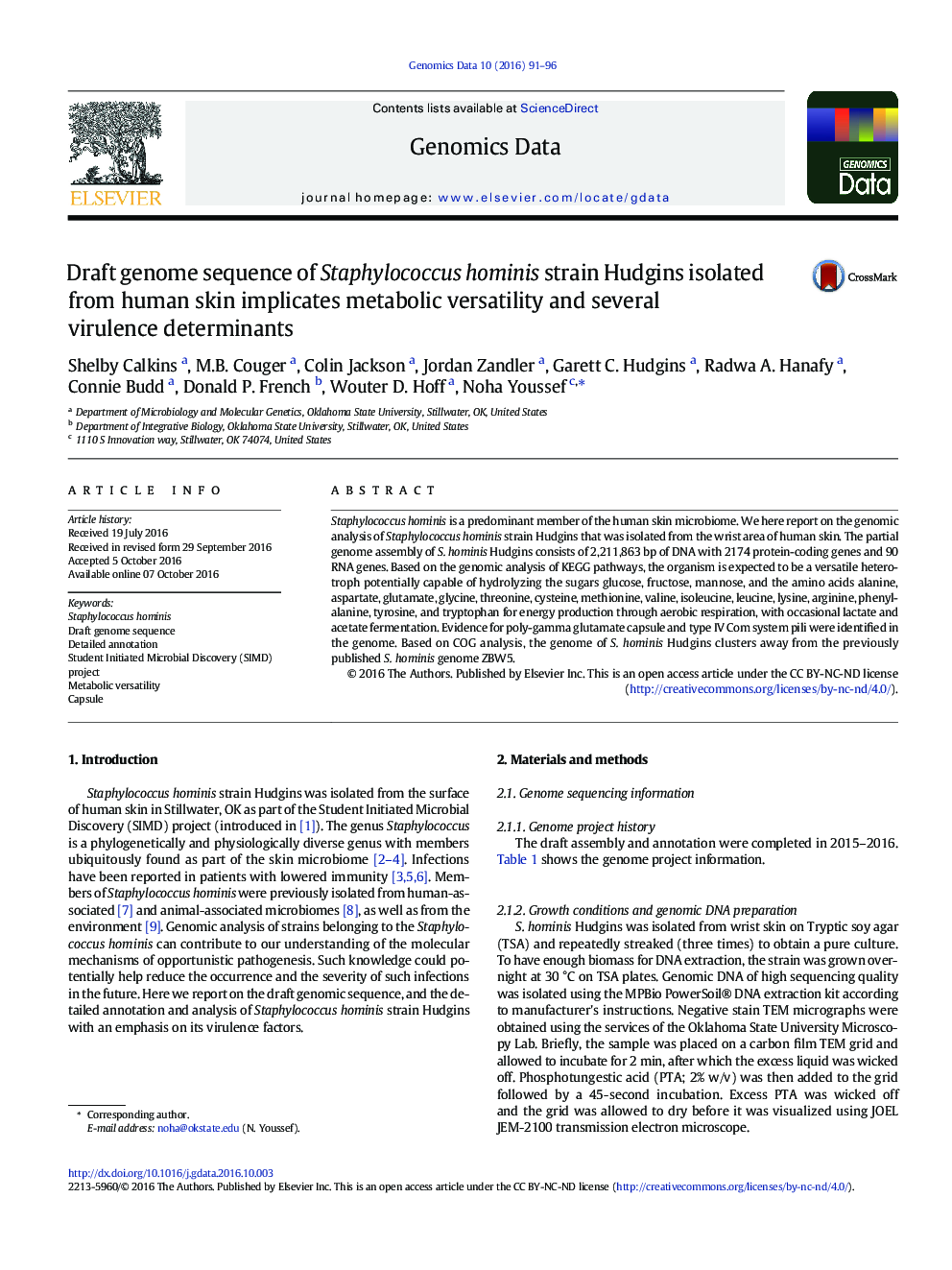| Article ID | Journal | Published Year | Pages | File Type |
|---|---|---|---|---|
| 8646378 | Genomics Data | 2016 | 6 Pages |
Abstract
Staphylococcus hominis is a predominant member of the human skin microbiome. We here report on the genomic analysis of Staphylococcus hominis strain Hudgins that was isolated from the wrist area of human skin. The partial genome assembly of S. hominis Hudgins consists of 2,211,863Â bp of DNA with 2174 protein-coding genes and 90 RNA genes. Based on the genomic analysis of KEGG pathways, the organism is expected to be a versatile heterotroph potentially capable of hydrolyzing the sugars glucose, fructose, mannose, and the amino acids alanine, aspartate, glutamate, glycine, threonine, cysteine, methionine, valine, isoleucine, leucine, lysine, arginine, phenylalanine, tyrosine, and tryptophan for energy production through aerobic respiration, with occasional lactate and acetate fermentation. Evidence for poly-gamma glutamate capsule and type IV Com system pili were identified in the genome. Based on COG analysis, the genome of S. hominis Hudgins clusters away from the previously published S. hominis genome ZBW5.
Related Topics
Life Sciences
Biochemistry, Genetics and Molecular Biology
Genetics
Authors
Shelby Calkins, M.B. Couger, Colin Jackson, Jordan Zandler, Garett C. Hudgins, Radwa A. Hanafy, Connie Budd, Donald P. French, Wouter D. Hoff, Noha Youssef,
